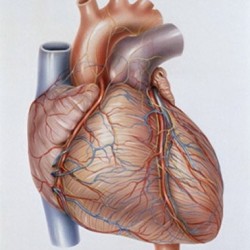By Helen Figueira
November 13, 2012
Time to read: 3 minutes
 The role of non-coding RNAs in heart disease
The role of non-coding RNAs in heart disease
Diseases of the heart and circulatory system kill more people in the UK than anything else. Death rates are falling faster than for many other diseases, but there remain great challenges to overcome. Jaya Krishnan heads up the newly formed Epigenetic Regulation of Metabolism Group at the CSC. And the latest scientific addition to the institute sets his sights firmly on tackling the science at the heart of some of these issues.
Having completed his undergraduate degree at ImperialCollege, Krishnan’s arrival at the CSC brings him full circle. He hasan unusual approach to heart biology, having first completed a PhDfocussed on tumour-induced lymphangiogenesis [lymphatic vesselformation]. “Coming from an oncology background, I had to think of adiseased heart as being like a cancer cell. When cells becometumourigenic they acquire properties that they had at earlier stages ofdevelopment. The same applies to a heart cell. When you have a healthyheart, you have an adult gene program. Diseased heart cells by contrasttake on an embryonic gene program. Besides this, it is interesting tonote that diseased heart cells undergo karyokinesis, but are incapableof cytokinesis mostly due to the structural inflexibility of the heartcell. It has also been appreciated in recent years that almost allgrowth pathways that impact tumour cell proliferation, similarly impactheart cell growth.”
The transcription factor HIF-1α (hypoxia-inducible factor) is animportant regulator of blood vessel growth that Krishnan firstencountered during his PhD. His early work at ETH Zurich revealed therole of HIF-1α in heart development. The next question was whether itmight play a role in the diseased state. HIF-1α controls geneexpression during early development in response to the low oxygen[hypoxic] levels in the embryo. Similar conditions can arise in theheart in response to pathologic stress, where the hearts attempts toadapt to the stress through induction of cardiac growth pathways. Whenthis occurs, the pre-existing cardiac blood vessel network is unable toadequately perfuse the heart, leading to hypoxia and HIF-1α is kickedback into action.
Now at the CSC, Krishnan hopes to investigate how HIF-1α takes effectby regulating a type of non-coding RNA (ncRNA – strands of RNA that arenever translated directly into protein). ncRNAs play an important rolein gene regulation, although how they do that – exactly – remainsunclear. “We are looking at a certain subtype of ncRNAs, transcribedfrom enhancer regions of the DNA,” he says. “In the past, enhancerregions were not thought to code for RNA at all, so this is newterritory. These ncRNAs have a high level of specificity, which isgreat because it makes them relatively easy to target. Normally, if youknock-down a gene, the whole body is affected. In contrast, ncRNAstranscription tends to be context- and/or tissue-specific, giving themtherapeutic potential. If these ncRNAs are specific to certain tissuesor cell types, hopefully therapeutic intervention could be targeted toone organ.”
“They have very local effects,” Krishnan elaborates. “What we have seenwith our enhancer RNAs is that they seem to regulate the expression ofthe flanking genes. Higher levels of the ncRNAs transcription lead tothe concomitant increase in flanking gene expression. We are currentlyworking on one specific ncRNA which is particularly interesting to usbecause the flanking genes in question regulate two critical anddistinct aspects of heart biology that is disturbed in the diseasestate: contractility, and the cellular growth phenotype.” Tinkeringwith the expression of these genes, therefore, could make a keycontribution to reducing the number of people dying from heartconditions around the world.
-AL
Photo Credit: Image originally published under CreativeCommons (CC-BY-NC-ND); Courtesy of Wellcome Images